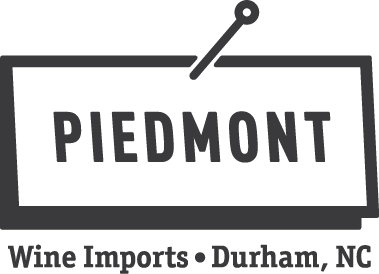

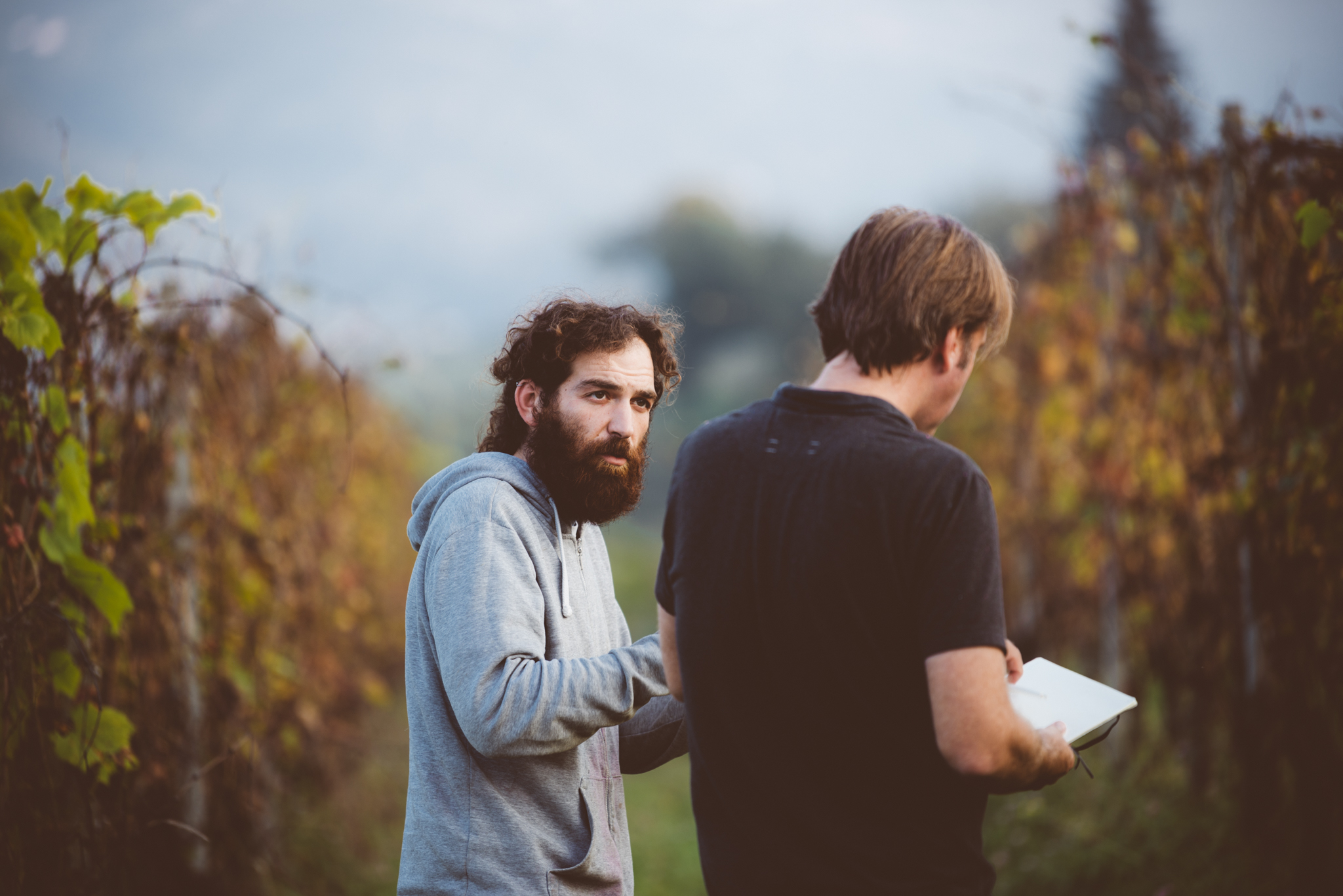















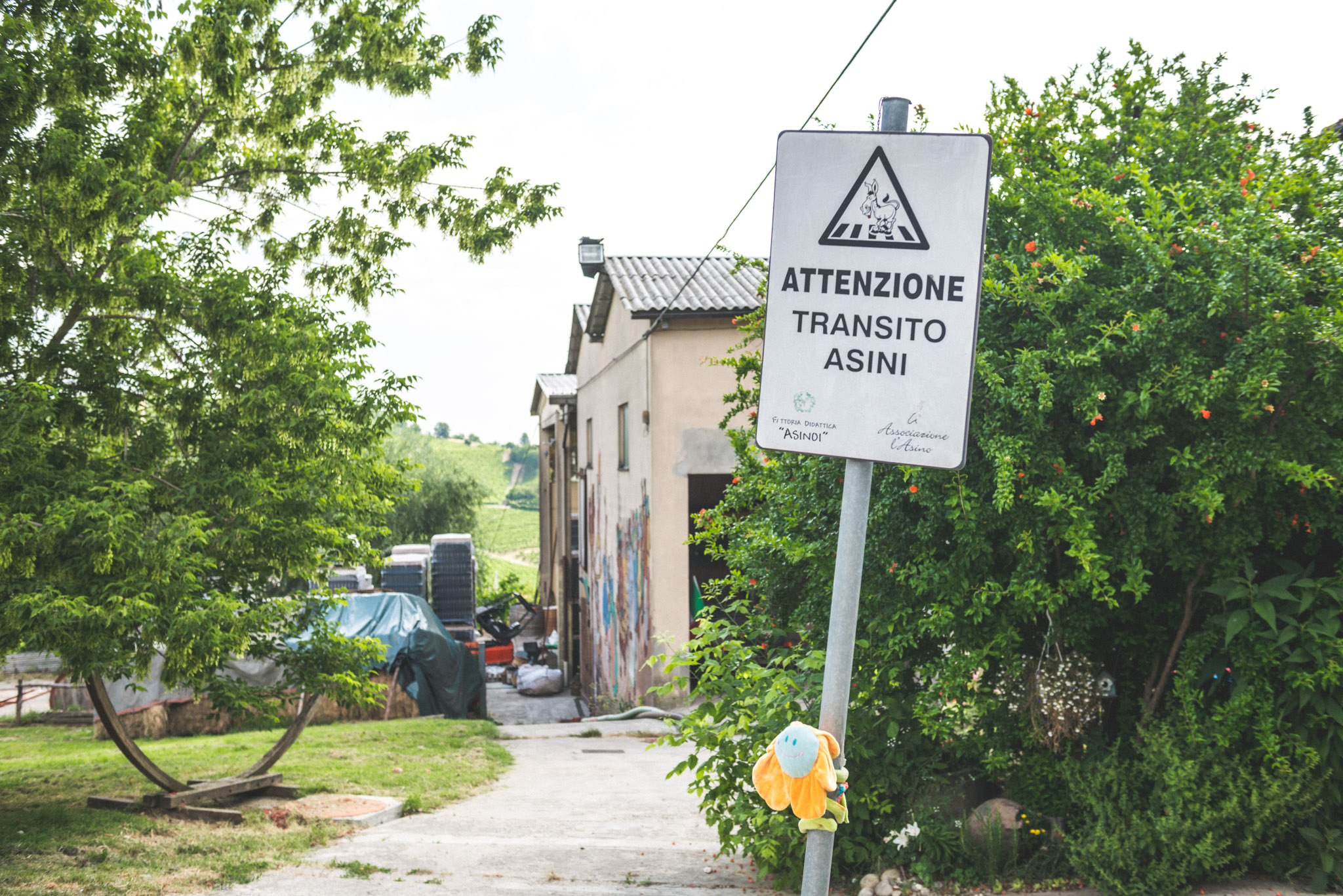



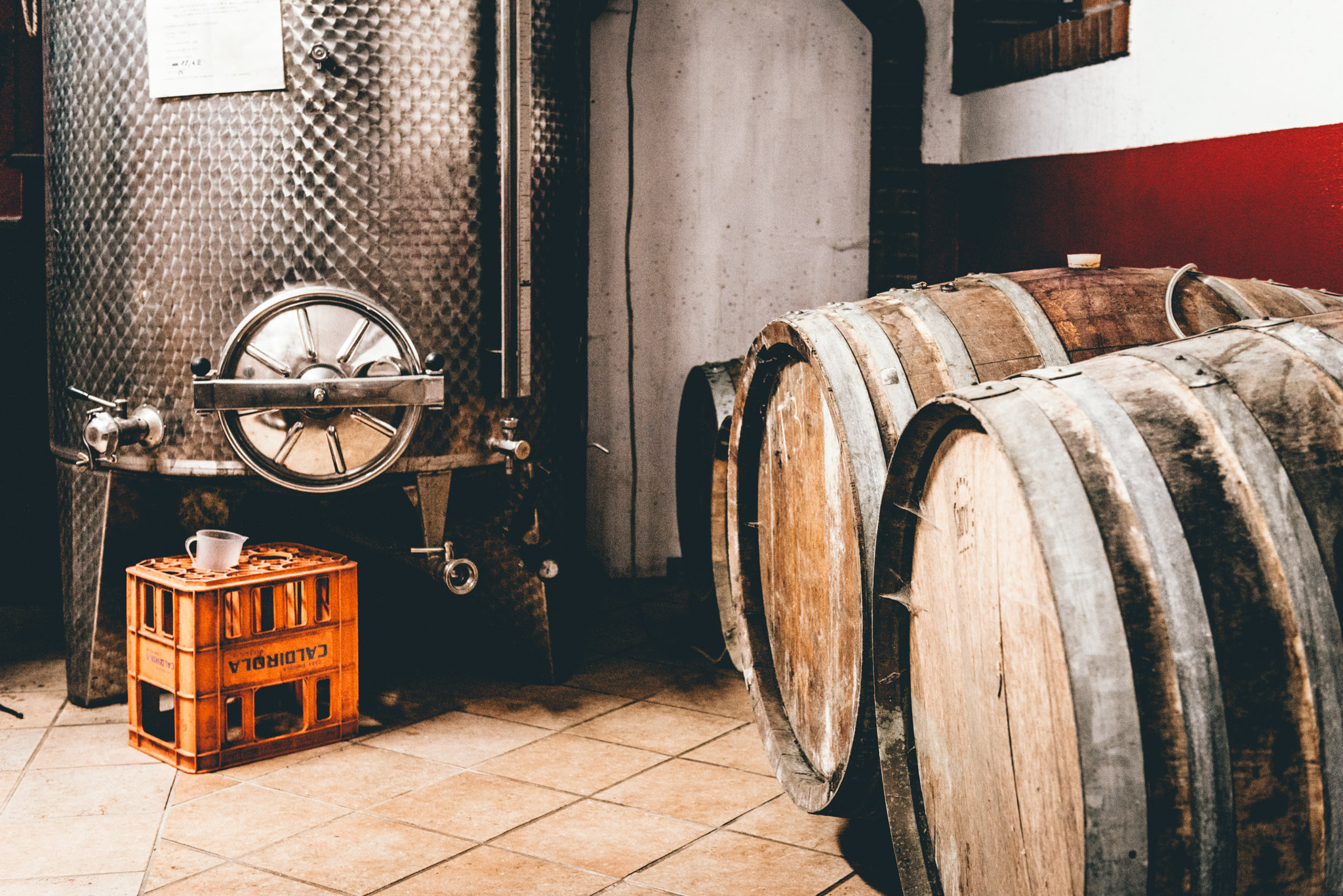
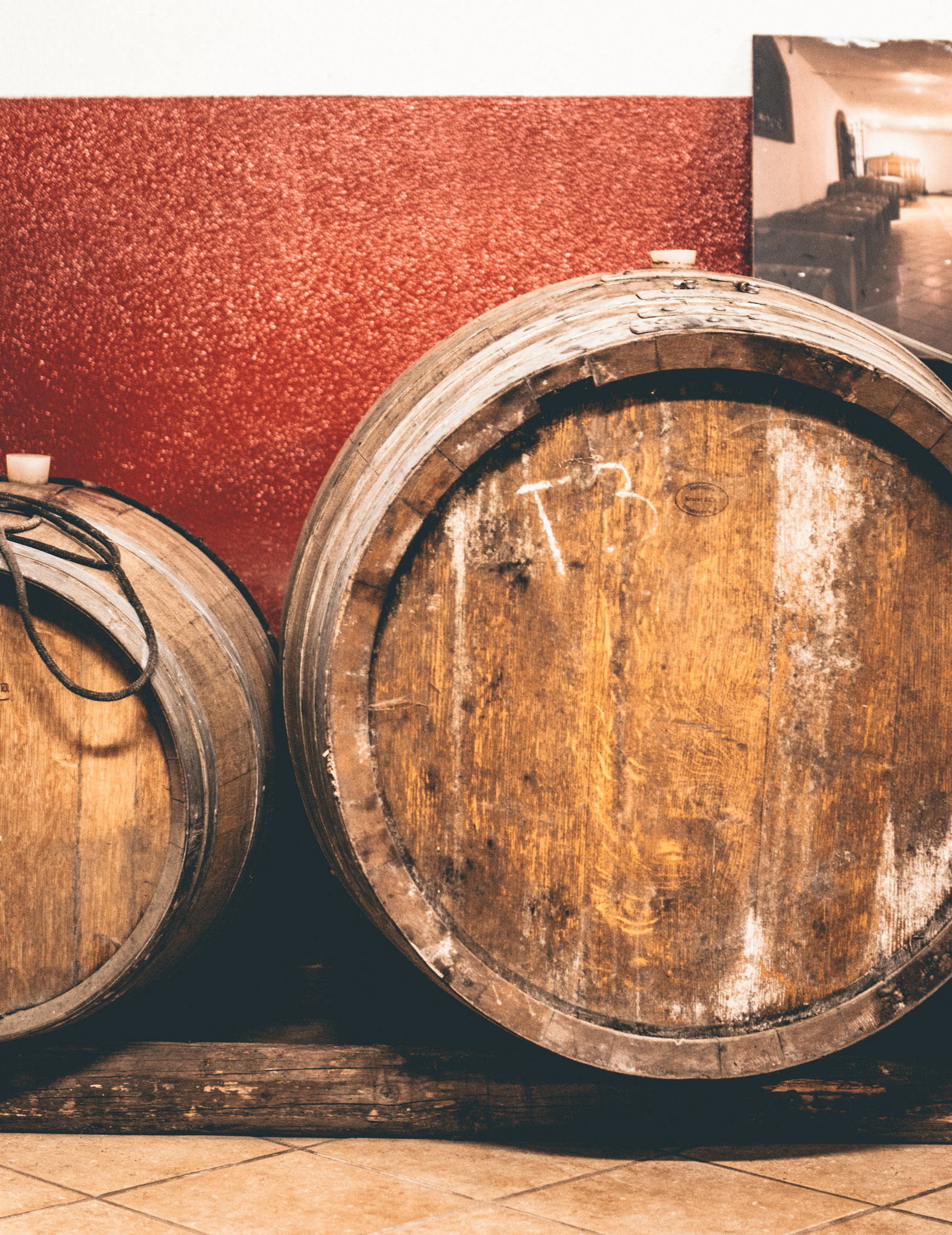

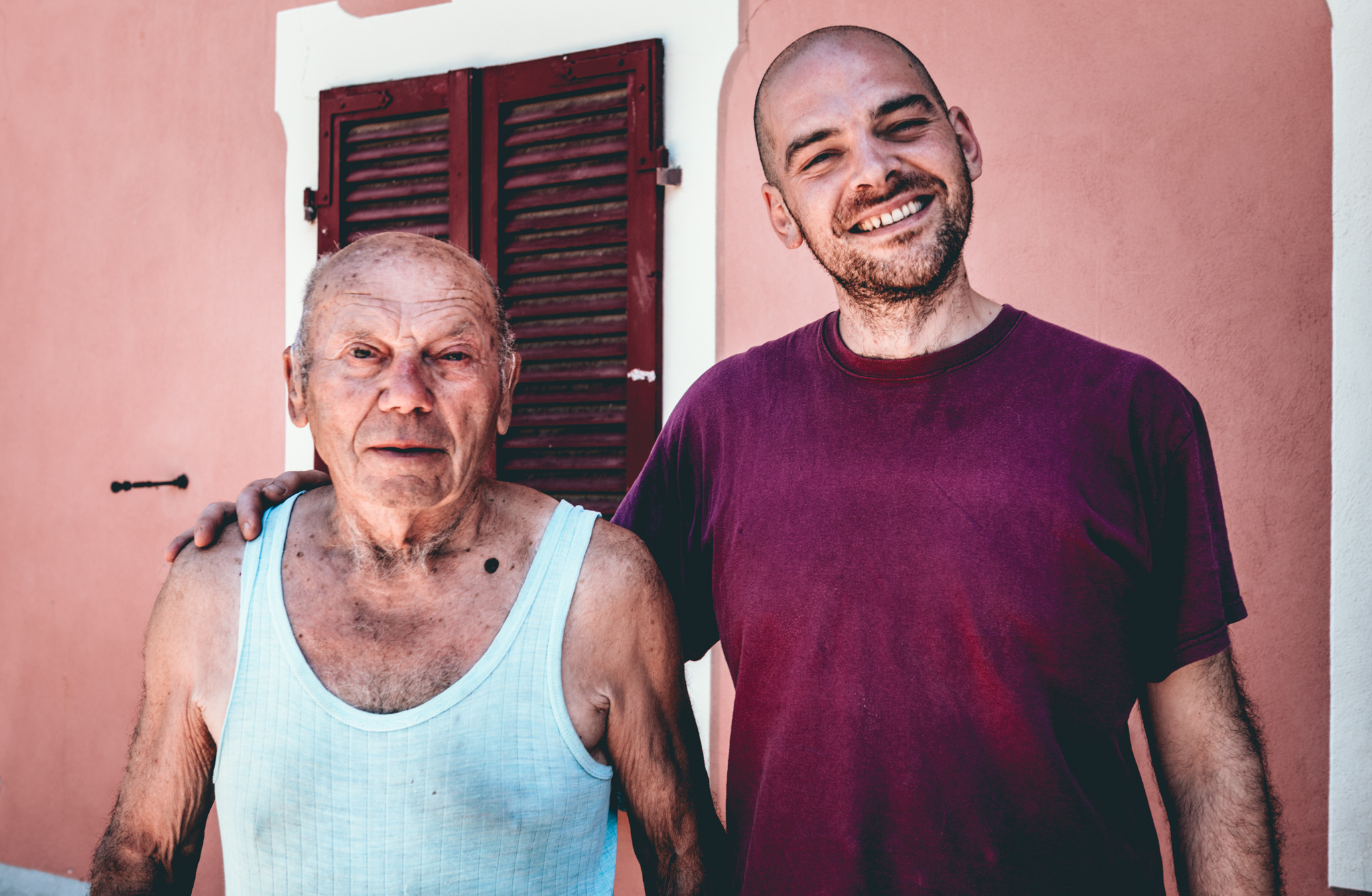


















Carussin
Who: Bruna Ferro and her sons Matteo and Luca
Where: San Marzano Oliveto, south of Asti, north of Canelli (Piemonte, Italy)
What grapes: Barbera, Carica l’Asino, Cortese, Moscato
Key facts: Certified-organic, with biodynamic tendencies. They make beer. They have donkeys.
Website: http://carussin.it/en
Instagram: @carussinwine
Carussin “il Carica 'l’Asino” Vino Bianco
Viticulture: certified organic by Suolo e Salute. Guided by modern biodynamic principles.
Soil type: chalk/clay
Elevation: 350m
Grapes: Carica l’Asino
This parcel was planted in 1954.
The white donkey has returned. Very few monovarietal bottles of Carica l’Asino are made. According to Bruna Ferro (owner of a dozen donkeys, among many other pets) the grape used to be planted on steep slopes and in fields with narrow rows not traversable by wagon and tractor. So farmers would “load up the donkey” with this variety. The current batch is pure delight. Unblemished apple aromas, texture, a lightly mineral finish. It’s the best version of Carica l’Asino that we’ve tasted.
Carussin “Completo” Vino Rosso 1L
Viticulture: Certified organic / Biodynamic
Soil type: chalk/clay
Elevation: 350m - 400m
Grapes: Barbera (65%) and roughly equal amounts Freisa, Dolcetto, and Grignolino.
Method of fermentation: Spontaneous wild yeast fermentation for three weeks in stainless steel, bottled unfined and unfiltered. Vines planted between 1960-1981. Less than 30mg/l free sulfur.
Cranberry. Rhubarb. Cherry. Matteo said this field has the highest biodiversity on their entire biodynamic farm, because the rows are narrow, preventing the use of machinery. It’s an old parcel of mostly Barbera, but look closely and you’ll see lots of other Piedmontese grapes in the vineyard. Dolcetto, Grignolino, Freisa, Ancellota, Alicante, Brachetto, possibly others. Low sulfur, low alcohol, wonderfully refreshing. — JM
Carussin “Completo” Vino Rosso BiB-3Liter
Viticulture: Certified organic / Biodynamic
Soil type: chalk/clay
Elevation: 350m - 400m
Grapes: Barbera (65%) and roughly equal amounts Freisa, Dolcetto, and Grignolino.
Method of fermentation: Spontaneous wild yeast fermentation for three weeks in stainless steel, bottled unfined and unfiltered. Vines planted between 1960-1981. Less than 30mg/l free sulfur.
There’s a new donkey (box) in town. The 11% abv crushable ultimate picnic red is a character unto itself. Unlike Asinoi, it’s not monolithically Barbera. Completo vines are beautifully sited in front of younger son Matteo Garberoglio’s house, a verdant canopy that separates his residence from the farmhouse shared by the remainder of the Carussin clan, 500 meters across the valley. The two farmhouses of Carussin face each other. The small vineyard space in-between probably gives Matteo and his wife a modicum of independence and privacy, though waves of WOOFers (and wine importers) lay siege to Matteo’s pad throughout the year. In the vines, evidence of Matteo’s singular brilliance as a farmer is everywhere. Alive soil, remarkable biodiversity, and a hodge-podge of ancient Piedmontese grapes that add older accents to co-planted/co-fermented Completo. As a sadly long-departed wine comrade used to say, “chug-a-lug, poo bear.” — JM
Carussin “Asinoi” Barbera d’Asti DOC
Viticulture: Certified organic / Biodynamic
Soil type: chalk/clay
Elevation: 350m - 400m
Grapes: Barbera planted in 1970, 1981 & 1984
Method of fermentation: Manual harvesting with baskets. Asinoi is made with soft pressing, controlled fermentation and average maceration, wine is pumped over circa 3 times a day, wine becomes steady naturally during ageing. Short ageing in concrete tanks.
Garrigue. Tart cherry. Before the natural wine hubbub broke all kinds of conventional wisdom and stylistic boundaries across our home state, Luca and Matteo were on the ground in North Carolina. Visiting our customers, eating barbecue, even WOOFing on other people’s biodynamic farms! Now they have wives and kids, and stay home in San Marzano Oliveto most of the time. But in the early days of our little business, they really went some extra miles. I’d like to think the brothers expanded notions of what Barbera could be. — JM
Carussin “Asinoi” Barbera d’Asti DOC BiB-3Liter
Viticulture: Certified organic / Biodynamic
Soil type: chalk/clay
Elevation: 350m - 400m
Grapes: Barbera planted in 1970, 1981 & 1984
Method of fermentation: Manual harvesting with baskets. Asinoi is made with soft pressing, controlled fermentation and average maceration, wine is pumped over circa 3 times a day, wine becomes steady naturally during ageing. Short ageing in concrete tanks.
Biodynamically farmed, certified-organic, low sulfur Barbera. Famiglia Carussin (an eclectic, extended, character-filled clan) use 15-35 year old vines planted on the high hills of San Marzano Oliveto to grow fruit with a wildly spicy red berry fingerprint. Asinoi is tannin free, chillable, and likely to be all gone before the real heat of grilling season arrives, so hurry up and order yours. — JM
Carussin “Lia Vi” Barbera d’Asti DOCG
Viticulture: Certified Organic / Biodynamic
Soil type: chalk/clay
Elevation: 350m - 400m
Grapes: Barbera planted in 1981
Method of fermentation: Manual harvesting with baskets. Lia Vì is made with soft pressing, controlled fermentation and average maceration, wine is pumped over circa 3 times a day, wine becomes steady naturally during ageing. Short ageing in concrete tanks. Longevity: 10 to 12 years.
Violet. Plum. Balsamic. Old vines from a single parcel in front of Bruna, Luca, and Luigi’s house and cellar. This amounts to a “library release” from the Ferro/Garberoglio family. I love charting Lia Vi’s evolution. I taste a little more tea leaf and grilled oyster mushroom now than I did a couple years back. — JM
At the request of his grandmother Matteo Garberoglio emerged, dreadlocked and outfitted in anarchist/roadie attire from the bowels of the building. Matteo had no idea why I’d arrived, but he breezed past this detail and eagerly offered a tour of the winery. I presented the chance for a break from routine labor. I knew we had corresponded, but a lot of his family are working around this small estate in San Marzano Oliveto in the Italian Piedmont… maybe I’d written to his mother Bruna? Ultimately, it didn’t matter. Moments later brother Luca arrived, self-consciously dressed in somewhat preppie clothes: he felt it necessary to explain he was returning from having his photo taken. He also had no idea why I was there, but with an earnestly friendly demeanor Luca took over from Matteo, who returned to running the bottling line.
Luca proceeded to show me around the labyrinthine facility. The place is huge! At places comically so. Luca conceded this point. “Our equipment is too big! But it is what we have, so we use it.” Mostly empty tanks tower overhead. Giant tools lay idle. It is an understatement to say that in the future, Casussin have the capacity to ramp up production.
The estate was founded in 1927, with four hectares located on hills between Nizza Monferrato and Canelli. Luca’s grandfather started the modern history of Carussin, expanding acreage, moving the estate in the direction of organic viticulture. Today their 14 hectares are certified organic and integrate many biodynamic practices into their farming.
We had a fine time inspecting the tasting room and bar where the beer Luca brews is served alongside local cheeses and charcuterie to an audience of friends and neighbors. Luca is a huge fan of Dogfish Head, and even once made a pilgrimage to Delaware to visit the brewery. We sampled some tasty salamis and creamy cheeses with a line-up of Carussin’s current releases. Standouts among their wines included the Lia Vi Barbera d’Asti, a red made from 35-year-old vines planted by Luca’s grandfather, in the terra rossa soils in front of the cellar. Lia Vi is picked a little later, and seems more elegant than your normal Barbera. All parts knit together well. The name Lia Vi refers to a little bird that lives in the vineyards and makes nests by knotting together pieces of vine.
Of the 42 wineries in the area of San Marzano Oliveto only two are organic. Quality wineries like Carussin are struggling to do things in the right way. Estates that make honest wine with a good spirit: these properties deserve our support. Their wines are characters, in the best possible way. The Ferro family seem irrepressibly positive, a quality that radiates from their wines and really can’t be a bad thing.
